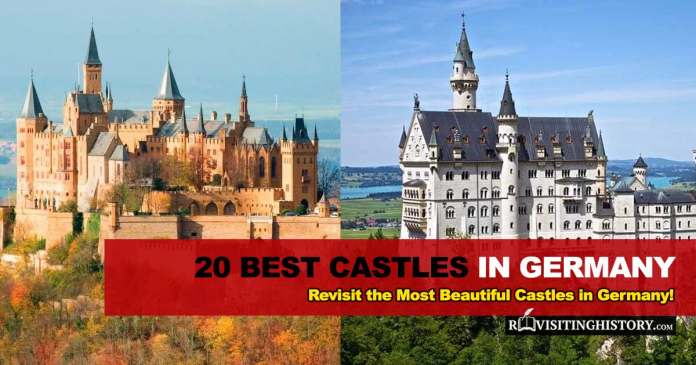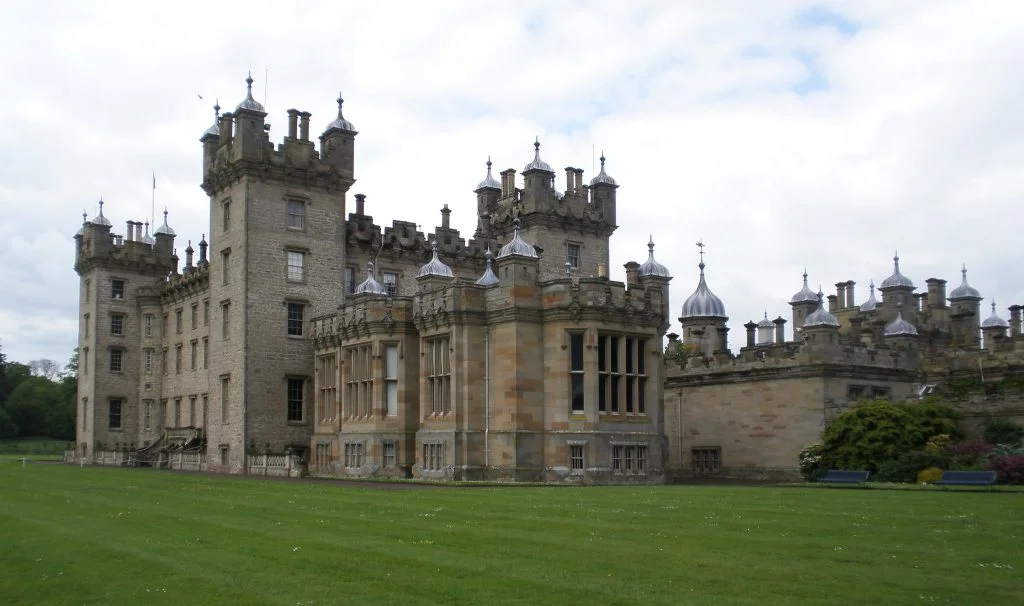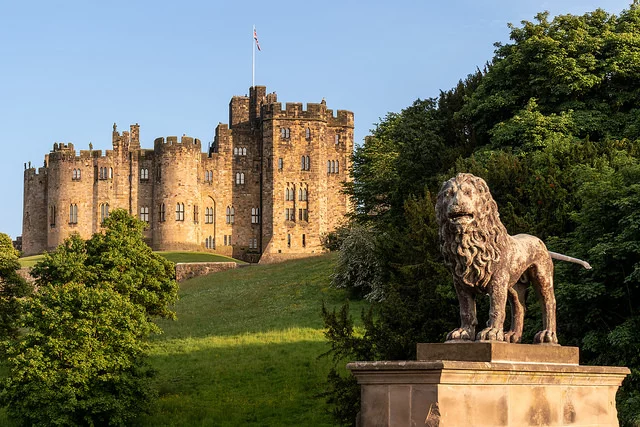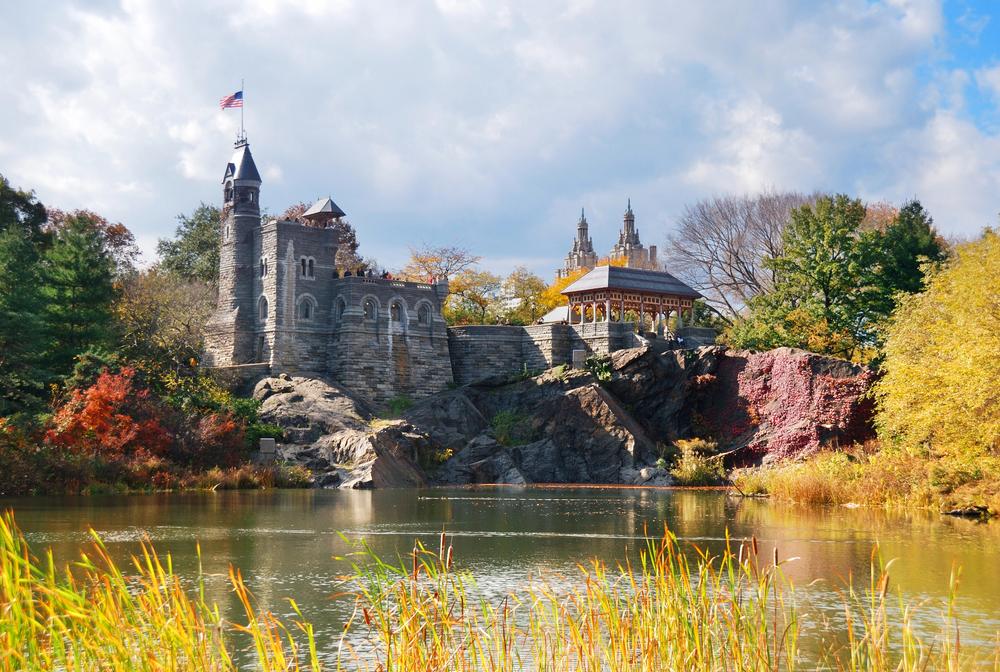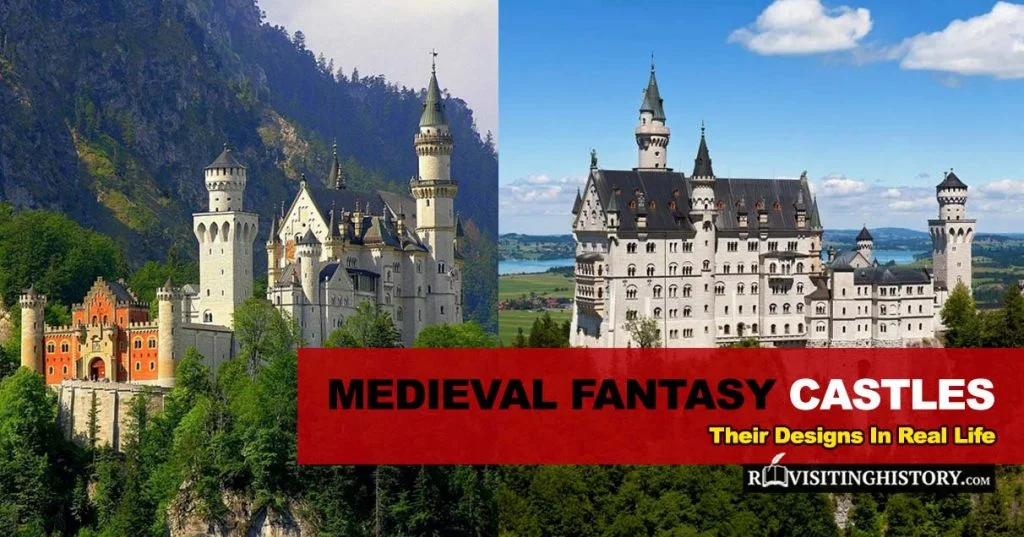When we talk about castles, Germany’s name comes at the top. Did you know there are a whopping 25,000 castles in the country? Mind-boggling, isn’t it?
Germany has some of Europe’s most famous and magnificent castles. From early medieval castles to something out of a Disney movie, you will find everything in this country. Many of these were built as fortifications to protect themselves from intruders while some were residences of the royals.
These castles have been the inspiration behind some of the timeless fairy tales we all have read, from Brothers Grimm to Frankenstein. They have even been the muse of Walt Disney in the creation of his iconic castle. Here is a list of ten castles, some of the finest and most famous in the country. (Keep scrolling for ten more less-known but just as amazing German castles!)So, let’s go ahead and explore!
Table of Contents [show]
10 Most Popular Castles to Visit in Germany
The order of the list is based on Google search volume of each castle = popularity.
1. Neuschwanstein Castle
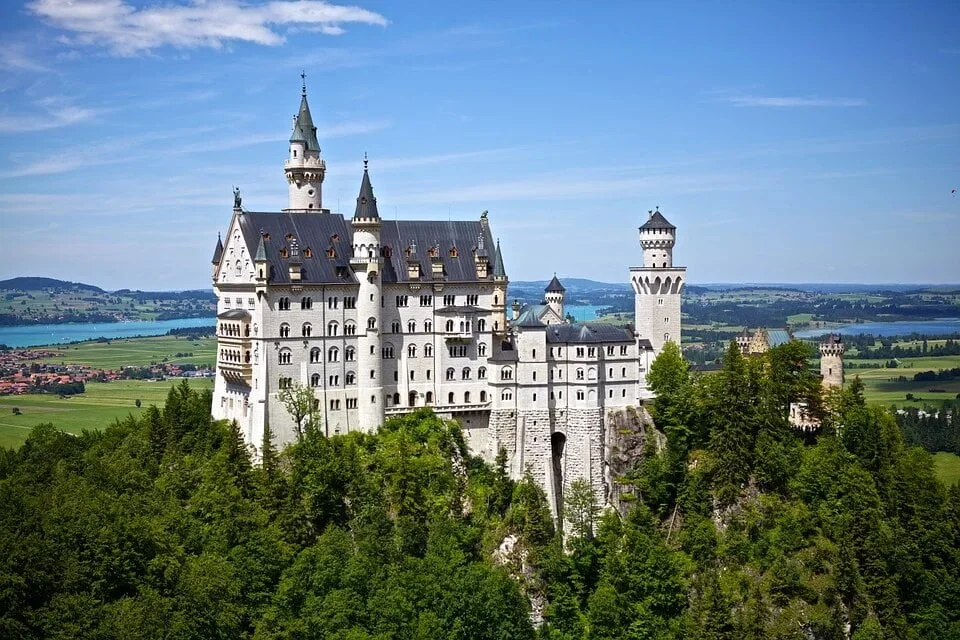
Neuschwanstein Castle huddled in the Bavarian Alps, overlooks the beautiful Hohenschwangau Valley. This idyllic castle looks like it has come out of the pages of a fairytale, magical and alluring. It has been the inspiration for Disney’s Sleeping Beauty and has appeared in movies such as The Great Escape and Chitty Chitty Bang Bang.
King Ludwig II of Bavaria built Neuschwanstein Castle as his personal retreat. However, after his death in 1886, the palace was opened to the public. Today, more than a million tourists visit the palace every year to soak in the splendor and landscape of the castle. The major attractions include the gatehouse, the multi-level courtyard, the regal interior, and the many relics and statues scattered throughout the complex. Neuschwanstein Castle remains to this date one of the most visited castles in the world.
- Location: Hohenschwangau
- Time built: 19th Century
- Architectural style: Romanesque Revival
- Touring: Allowed. Visit the official website for more information.
2. Eltz Castle
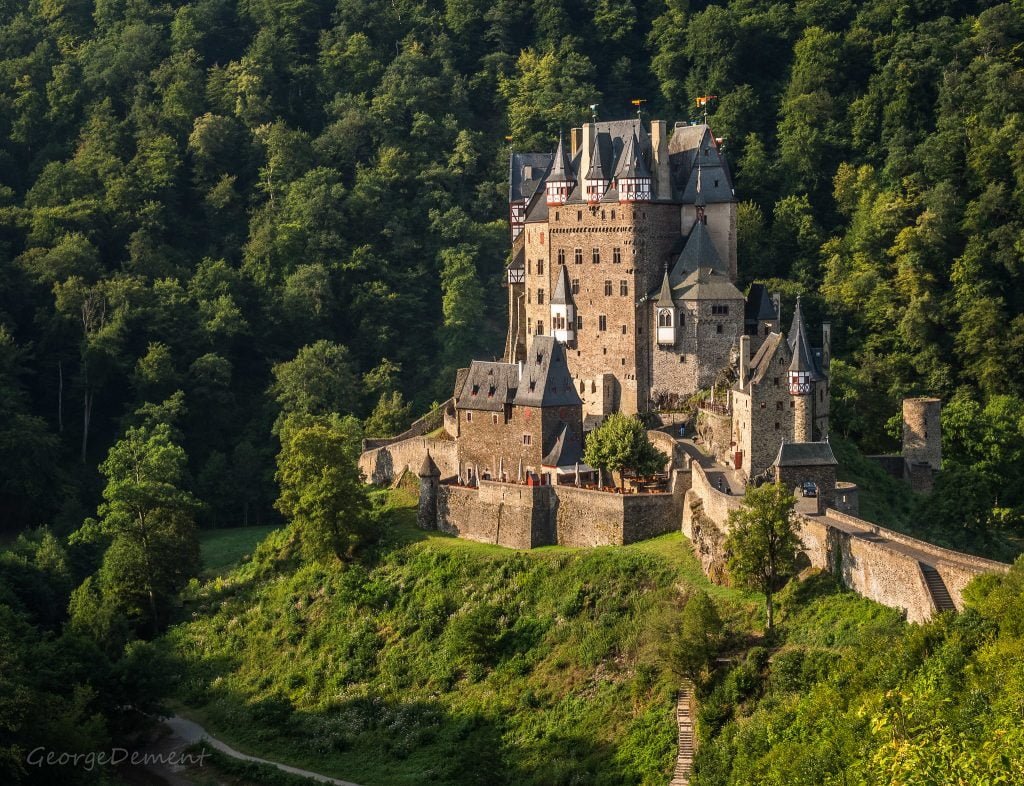
Eltz Castle is surrounded by the mystical Eltz forest and is around 850 years old. Never touched by war, it is still owned by the Eltz family and is as pristinely maintained as it was centuries ago.
The castle features original antique furnishings along with gold, silver, and porcelain treasures. Stunning authentic furnishings from the Middle and Early Modern ages are also in the exhibition. You can explore the many artifacts and artwork dotted around the castle, take in the tranquil surroundings, explore and hike through the woodlands and click some amazing Instagram-worthy pictures!
- Location: Wierschem
- Time built: 12th century
- Architectural style: Romanesque, Baroque
- Touring: Allowed. Visit the official website for more information.
3. Hohenzollern Castle
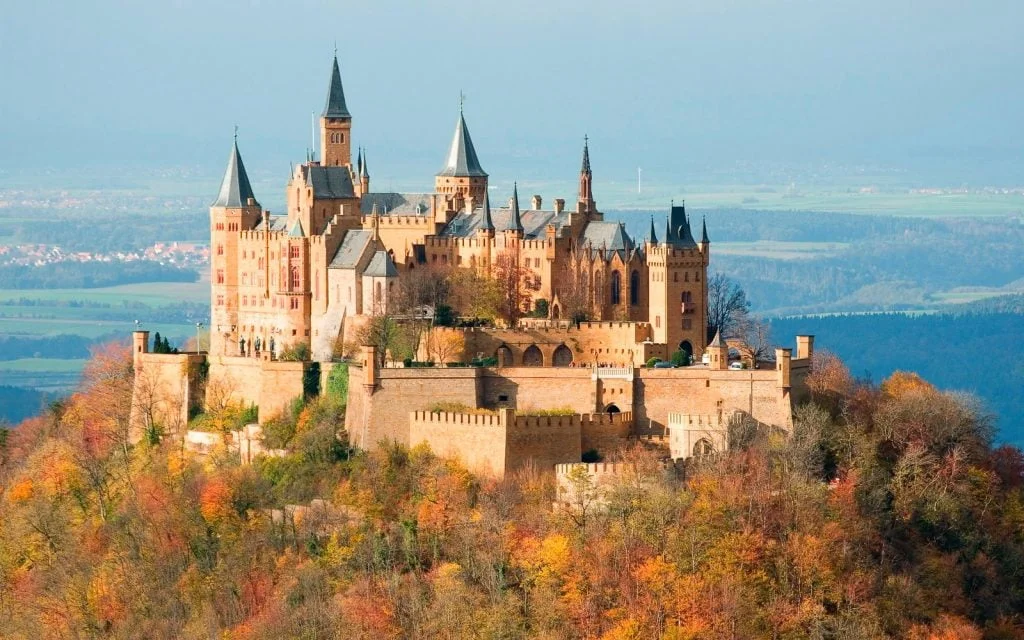
Hohenzollern Castle is positioned in the heart of Baden-Württemberg on top of Mount Hohenzollern. It has been the home of countless kings and German emperors for centuries.
Originally 11th century built, the castle was destroyed and rebuilt thrice. The current castle was constructed in the 19th century and is home to some of the finest royal treasures. Some of the most famous assets include knights’ armors, some belongings of Fredrick the Great and Queen Louise, the royal crown of Prussia, and more.
The castle offers a grandiose panoramic view of more than 100 kilometers (62 miles) of the rolling forest surrounding it. Today, it is a very popular tourist destination and there are numerous activities organized there to give you an authentic German experience.
- Location: Bisingen, Zollernalbkreis
- Time built: 11th -19th Century
- Architectural style: Gothic Revival
- Touring: Allowed. Visit the official website for more information.
4. Heidelberg Castle
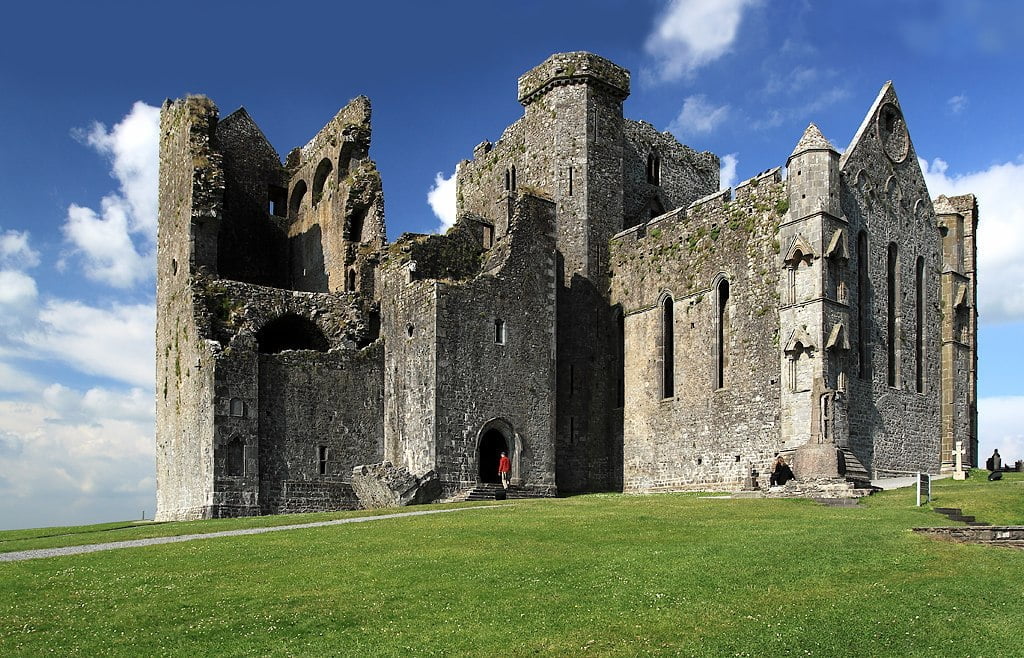
The majestic Heidelberg Castle lies 300 feet above the city of Heidelberg, nestled into the hills. It is one of the most impressive-looking castles in Germany.
The castle has been plundered and struck by lightning two different times. It is still partially ruined but it only adds to the glory and charm of the place. Nearly one million people visit the castle, making it one of the top most visited places in Germany.
Heidelberg Castle also proudly owns the largest wine barrel in the world: Heidelberg Tun. It has the capacity to hold 220,000 liters (58117 gallons) of wine and is 23 feet high and 27 feet wide. Heidelberg Tun is a fantasy come true for wine enthusiasts. There is also a dance floor where you can have a glass of wine and dance alongside. Additionally, you can take a walk through the castle galleries and look through the impressive art and sculptures or enjoy the stunning views from the palace courtyard.
- Location: Heidelberg
- Time built: 13th Century
- Architectural style: Gothic and Renaissance
- Touring: Allowed. Visit the official website for more information.
5. Lichtenstein Castle
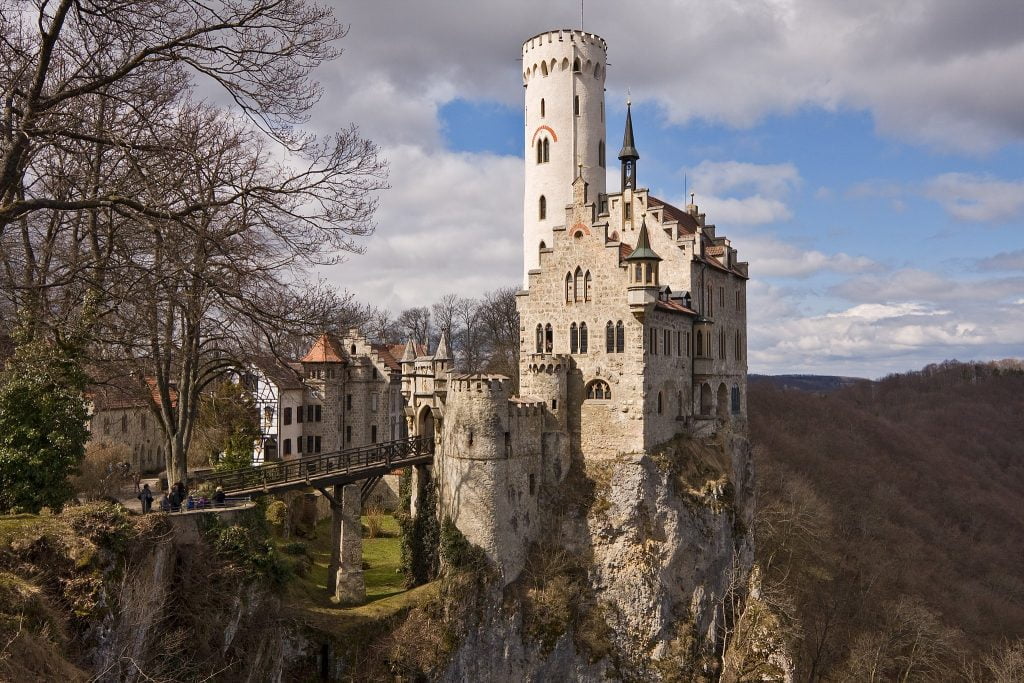
Lichtenstein Castle is one of those castles perfect for a knight and fair maiden story. Located in southern Germany, the castle sits atop a cliff in the Swabian Alps over the River Echaz and overlooks the picturesque rolling hills below.
Count Wilhelm of Württemberg, the Duke of Urach, inspired by the novel Lichtenstein, had Lichtenstein Castle constructed. It is still owned by the Dukes of Urach but the courtyard and some portion of the interior of the castle is open to the public. The castle treasures include some of the original fixtures and furnishings from the 1800s and a collection of weapons and arms. Besides that, the architecture is awe-inspiring and the amazing panoramic landscape attracts a great number of tourists every year.
- Location: Baden Wurttemberg
- Time built: 12th century
- Architectural style: Gothic Revival
- Touring: Allowed. Visit the official website for more information.
Revisit More Historic Places Below or Read Further
6. Hohenschwangau Castle
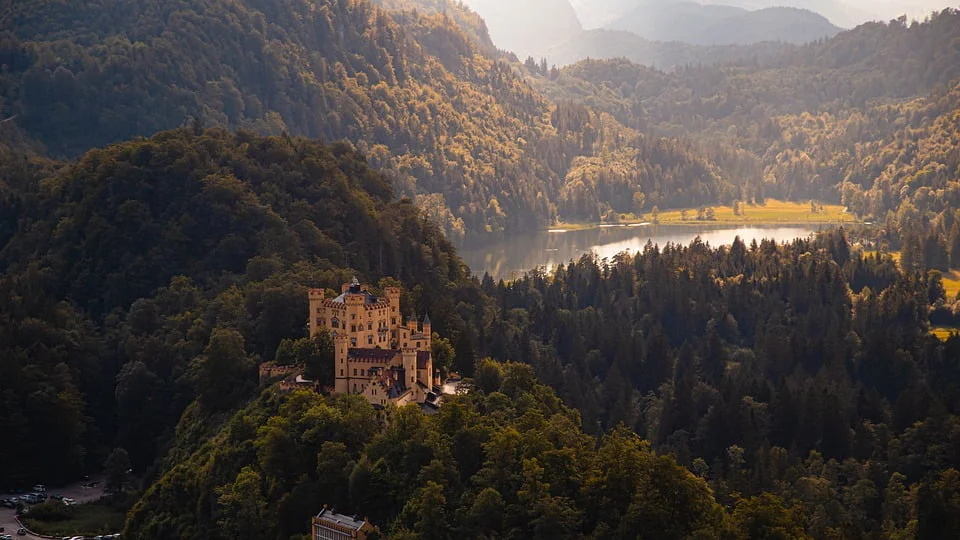
The castle was built in the 12th century and was formerly home to the Schwangau knights. It was, nevertheless, severely destroyed throughout the decades.
Crown Prince Maximilian, the father of King Ludwig II, bought the castle in 1832. It was completely reconstructed and took five years to finish. During the summer, he and his family used the castle as a hunting retreat.
The interior and exterior designs, as well as the room furniture and over 90 wall paintings, are all coordinated and meld into a seamless whole. Following his father’s death, King Ludwig II inherited the castle and spent most of his time there.
The complex has been conserved as an exceptional romantic architectural landmark, as designed by Maximilian and his artist-architect.
- Location: Schwangau
- Time built: 12th Century
- Architectural style: Gothic Revival Architecture
- Touring: Allowed. Visit the official website for more information.
7. Wartburg Castle
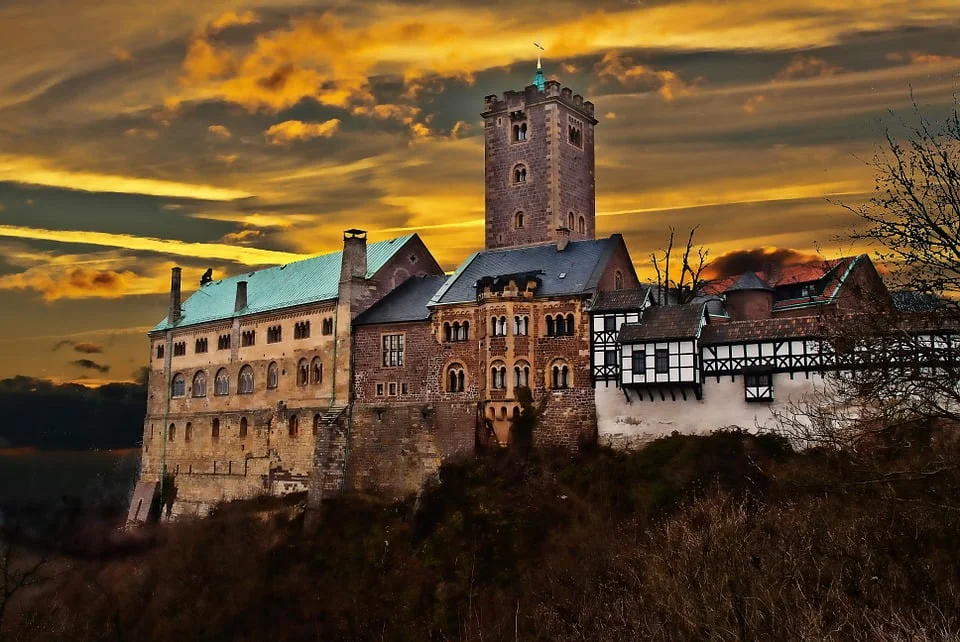
Wartburg Palace is steeped in history and lore. Sitting snug over the town of Eisenach in Thuringia, it is a perfect example of a feudal hilltop fortress. It was also the first German castle to be identified as a UNESCO World Heritage Site in 1999. It is also known for many historical events, the significant one being Martin Luther translating the New Testament of the Bible into German in the castle itself. The castle is also said to inspire King Ludwig II in the building of Neuschwanstein Castle.
The castle is open to the public, and you can explore the castle grounds, the extensive art collection it houses, and the museum library. The castle is a wonderful relic of centuries past and a must-visit for any history enthusiast.
- Location: Eisenach
- Time built: 11th Century
- Architectural style: Medieval and Romanesque
- Touring: Allowed. Visit the official website for more information
8. Schwerin Castle
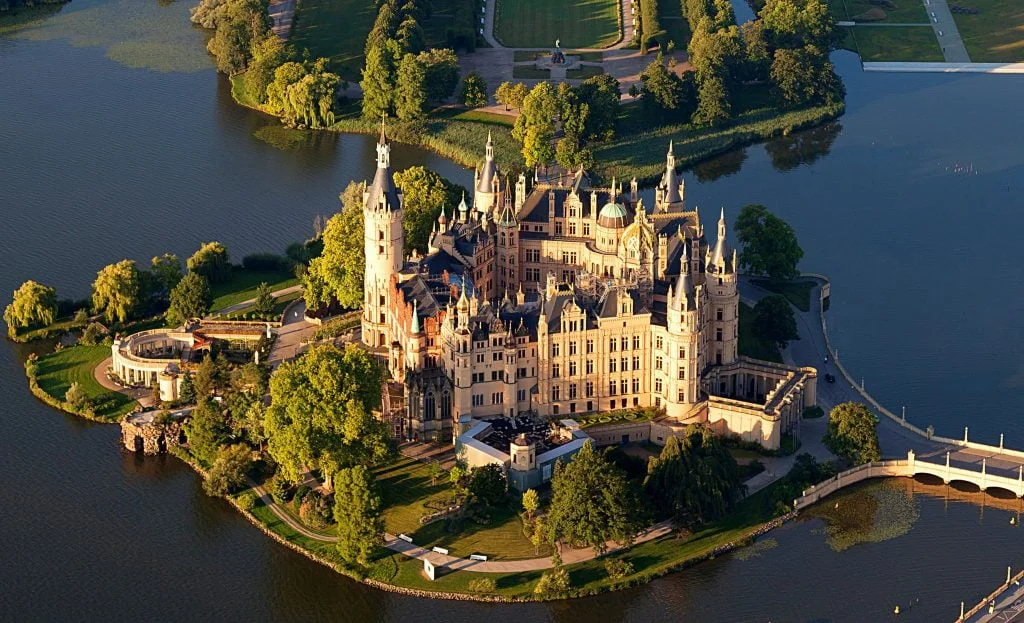
The picturesque Schwerin Castle is encircled by lakes and forests and looks like something out of a Disney movie. Built in the 19th century, the castle consists of an assortment of towers with domes and pinnacles. Its architecture is widely appreciated, and the castle is deemed one of the finest examples of the historicism period in Europe.
One of Germany’s greatest tourist attractions, you will love its gardens and the beautifully arranged parkways, flowerbeds, and sculptures. You can also enjoy the splendid living rooms, gorgeous ballrooms, paintings gallery, magnificent weapons, and the magnificent china and silver displayed in the museum. Schwerin Castle also remains the seat of the local government.
If you are interested in the supernatural, you may also be lucky enough to meet the castle’s resident ghost Petermännchen, who may play a trick or two on you!
- Location: Schwerin
- Time built: 19th Century
- Architectural style: Historicism
- Touring: Allowed. Visit the official website for more information.
9. Colditz Castle
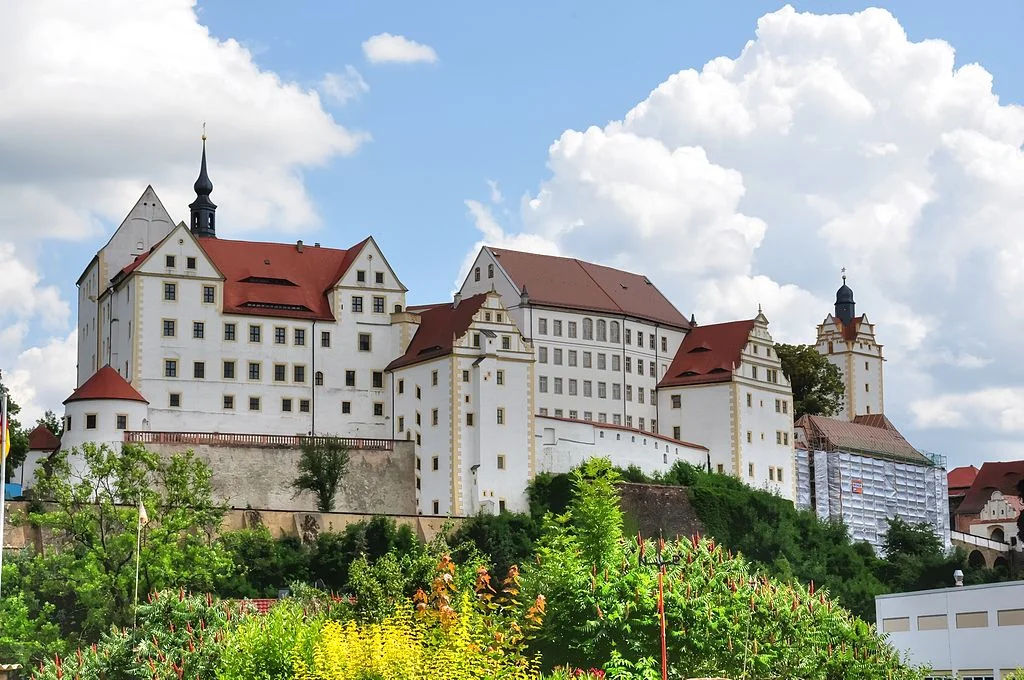
Colditz Castle is located on a cliff overlooking a little East German village in the state of Saxony. It has been used as a work camp and a psychiatric institution since the Middle Ages.
The town of Colditz is located in the center of Germany, in the triangle formed by the three famous cities of Leipzig, Dresden, and Chemnitz. The first fortress was built on the orders of powerful German king Henry IV in the late 11th century AD. From that point on, the castle served as an important watchtower for the German monarchy.
Owned by the Free State of Saxony these days, Colditz Castle has seen a steady stream of renovation ventures over the years. They include the revamping of the facades and courtyard in 2002 to the redesigning of the outdoor facilities in 2015. The castle is well up kept nowadays, ready for the tourists that visit it each day.
- Location: Colditz
- Time built: 16th Century
- Architectural style: Renaissance, Renaissance architecture
- Touring: Allowed. Visit the official website for more information.
10. Nuremberg Castle
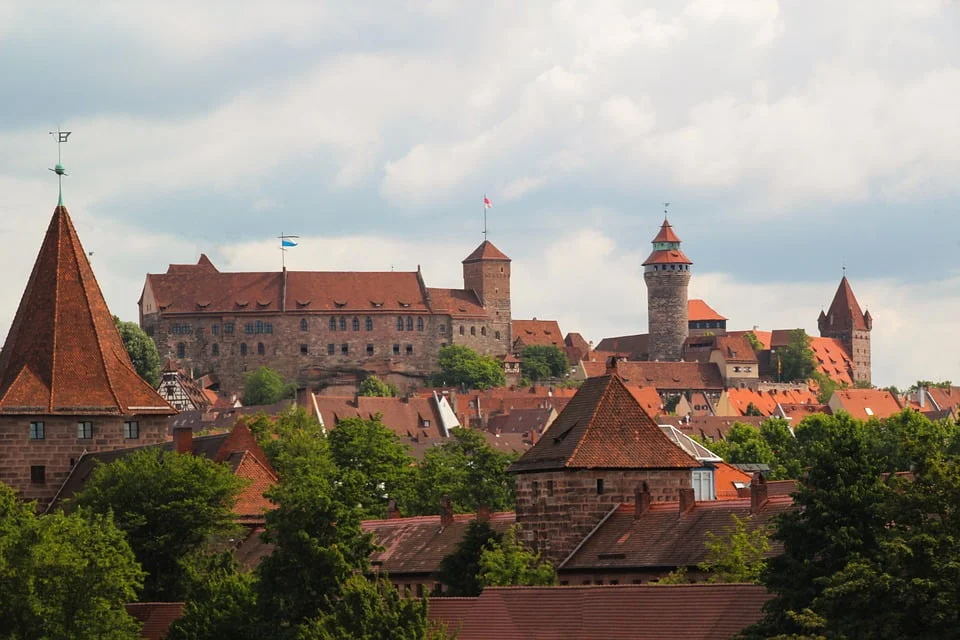
The Hohenstaufens and their successors constructed the massive complex on top of the ruins of older buildings from the Salians’ time. The castle, which is made up of a group of medieval fortified buildings on a sandstone ring in the heart of Nuremberg’s historical center, is regarded as one of Europe’s most powerful medieval fortifications. It represented the Holy Roman Empire’s power and importance, as well as the Imperial City of Nuremberg’s exceptional role.
The castle museum was renovated in 2013 and now explores many components and purposes of the castle from a historical perspective. The displays also provide information about the German Nation’s Holy Roman Empire and Nuremberg’s significance in the late Middle Ages.
- Location: Nuremberg
- Time built: 11th Century
- Architectural style: Bavarian
- Touring: Allowed. Visit the official website for more information.
Planning to Visit Nearby Countries? Check Out These Best Castles Lists:
10 Less Popular Castles Worth Visiting While In Germany
Besides the top ten, here is a list of another ten castles, which are a must-visit if you are in Germany:
11. Marienburg Castle
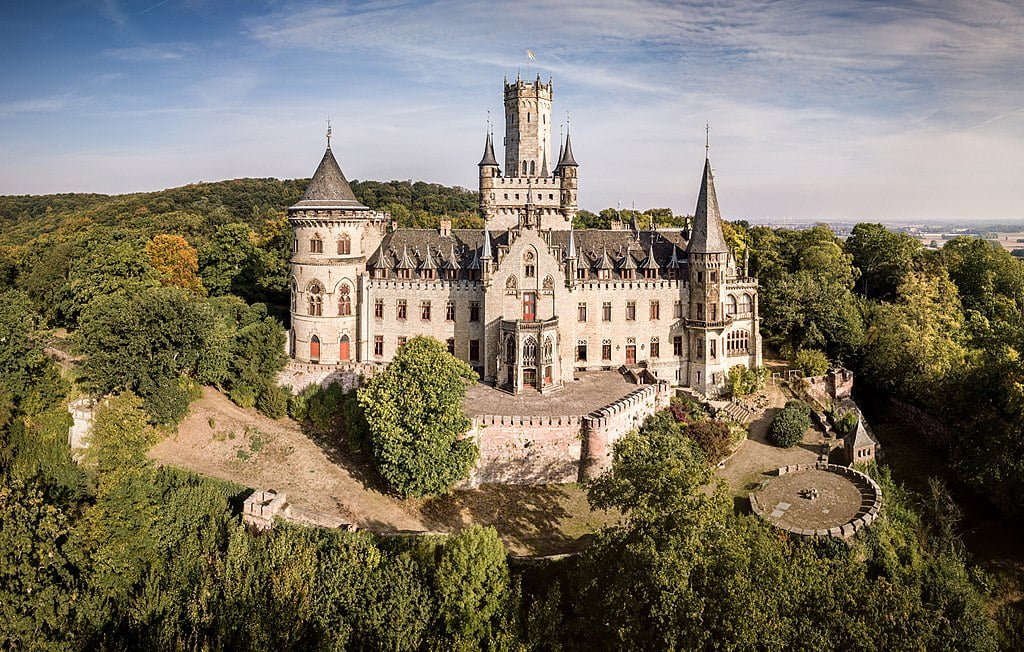
This castle became the property of the great-great-great-grandson of George V and Queen Mary, His Royal Highness Ernst August in 2004. The family inheritance was a given, as Marienburg was actually a birthday present from George to Mary and remained in the family till 2018 when Prince Ernst signed it off to the State of Lower Saxony.
The castle’s museum has always been quite a favorite tourist destination, and the chapel and restaurant are close seconds. It’s one of the most picturesque buildings that you’ll ever experience, and roaming around the grounds will overwhelm anyone with the sheer majesty and Disney-inspiring aesthetic of the facade.
- Location: Hanover, Lower Saxony
- Time built: 19th Century
- Architectural style: Gothic Revival
- Touring: Allowed. Visit the official website for more information.
12. Burghausen Castle
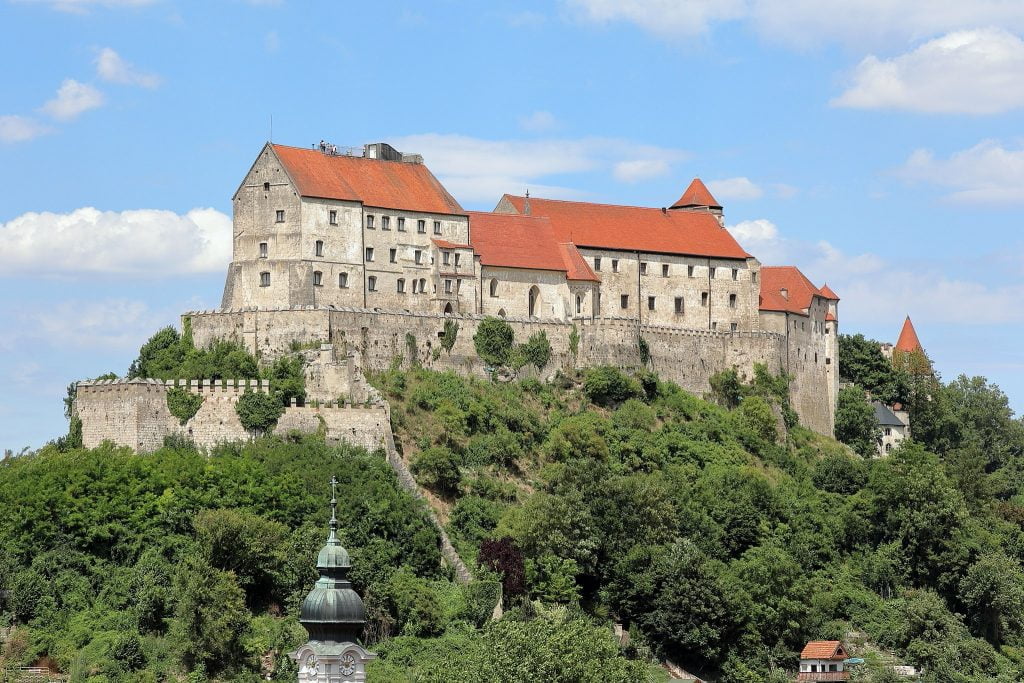
As one of the longest castle complexes in the whole world at half a mile (1.05 km) long, Burghausen showcases the might of the Great Bavarian Counts back in the day. Over the centuries, this castle saw a lot of action. From changing ownerships to being a military stronghold to its survival through the Napoleonic Wars, Burghausen has been through the brightest as well as darkest times in German history.
Today it stands proud and tall, overlooking the small town established at its base. With its several courtyards, recurring shows, as well as regular exhibitions, it has become an important tourist destination in the area. It’s just a two-hour drive away from Munich, so many people put it on their itinerary while exploring the area.
- Location: Upper Bavaria
- Time built: 11th Century
- Architectural style: Gothic Medieval
- Touring: Allowed. Visit the official website for more information.
13. Dresden Castle
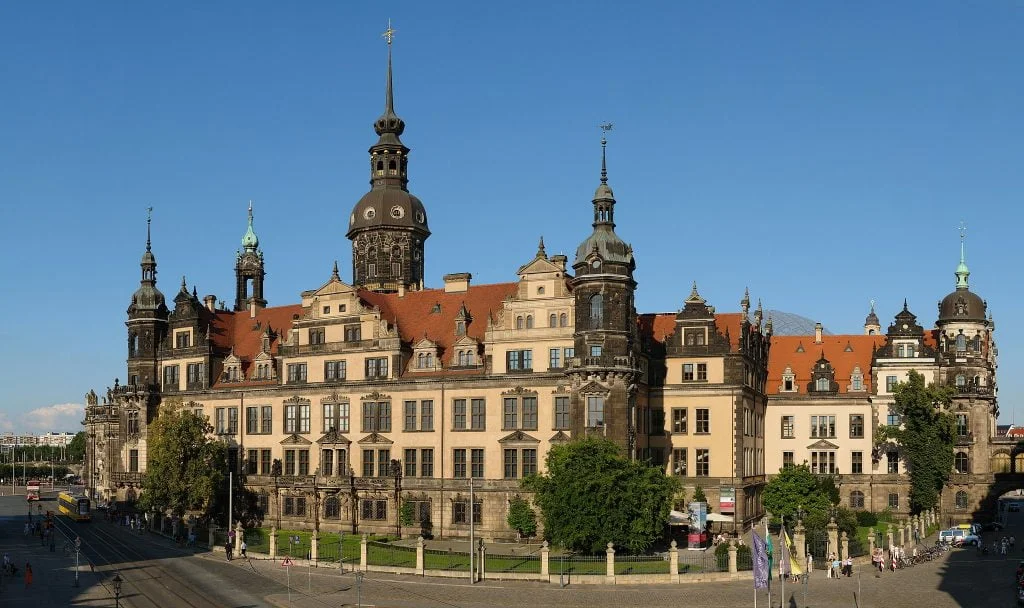
Originally a Romanesque keep, the version of Dresden Castle that we see today was built in the 18th century after a mid-version burned down. Later, it was refurbished in the Baroque/Neo-renaissance style. Various modifications were also made to the interior in the early twentieth century, including electricity and floor heating.
Dresden’s tragedy was the bombing that destroyed it in 1945 (World War II). In it, one of the museums as well as three other rooms were destroyed. Proper restoration efforts were undertaken in the 60s. Today, this castle is a thriving tourist destination that houses five different museums and state apartments.
- Location: Dresden
- Time built: 12th Century
- Architectural style: Baroque/Neo-Renaissance
- Touring: Allowed. Visit the official website for more information.
14. Rheinstein Castle
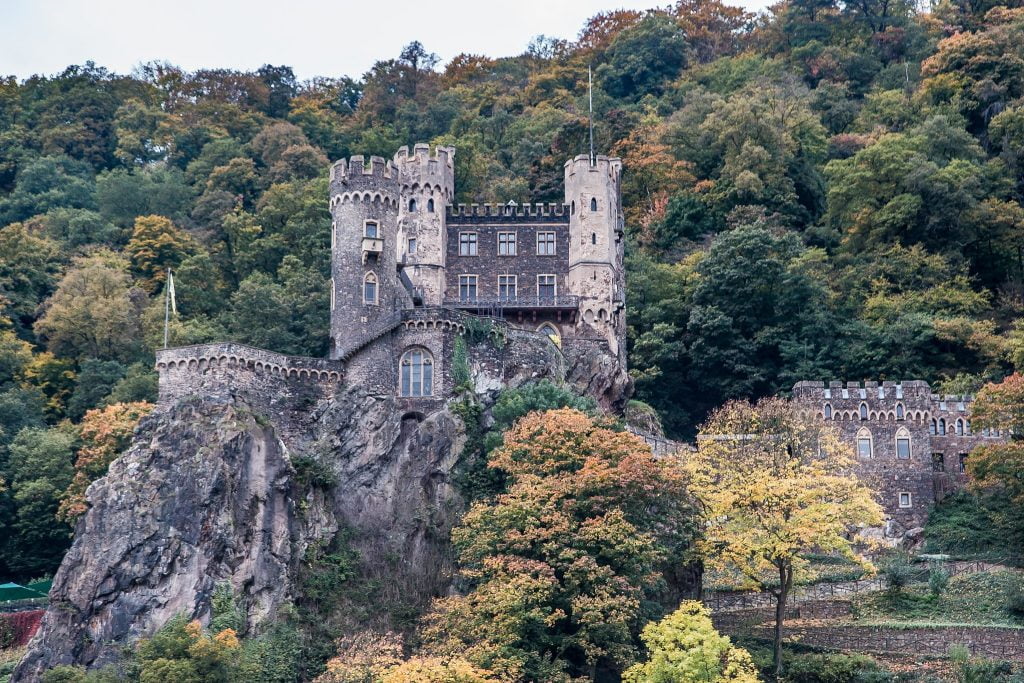
As one of the most iconic castles in all of Germany, Rheinstein stands proud and tall on its east-facing slope in the Bingen Mountains. It was partially used for residential purposes but most of it was a stronghold to fight against the robber knights of the era. Its picturesque location gives it a movie-esque edge and the location is perfect for a peaceful, nature-inspired jaunt.
Rheinstein Castle was given a romantic makeover by Prussia’s Prince Frederick Wilmhelm Ludwig. On his behest, it was extended to include a summer house that he sumptuously furnished. Today, it houses an apartment, restaurants, and a gift shop where tourists love buying thematic souvenirs. The landscape park at the castle is one of the biggest attractions for nature-lovers, where artificial streams and waterfalls make for a serene incursion.
- Location: Upper-Middle Rhine Valley
- Time built: 12th Century
- Architectural style: Medieval/Romantic
- Touring: Allowed. Visit the official website for more information.
15. Moritzburg Castle

Moritzburg Castle was originally intended to be nothing more than a hunting lodge for the high-ranking friends of the Duke of Saxon. However, it was added to and transformed by various owners over the course of time. Augustus the Strong was one of the most notable holders of the castle, and he was the one who turned the lodge into a luxurious hunting palace.
Brimming with Baroque elegance and surrounded by French gardens, the romantic appeal of Moritzburg has only increased over the centuries. There’s an art museum inside that visitors love to roam through, while the splendid architecture has been featured in a number of movies. A number of royal carriages stand at the doorway to provide the full experience to tourists.
- Location: Saxon
- Time built: 16th Century
- Architectural style: Classic Baroque
- Touring:Allowed. Visit the official website for more information.
Revisit More Historic Places Below or Read Further
16. Reichsburg Castle
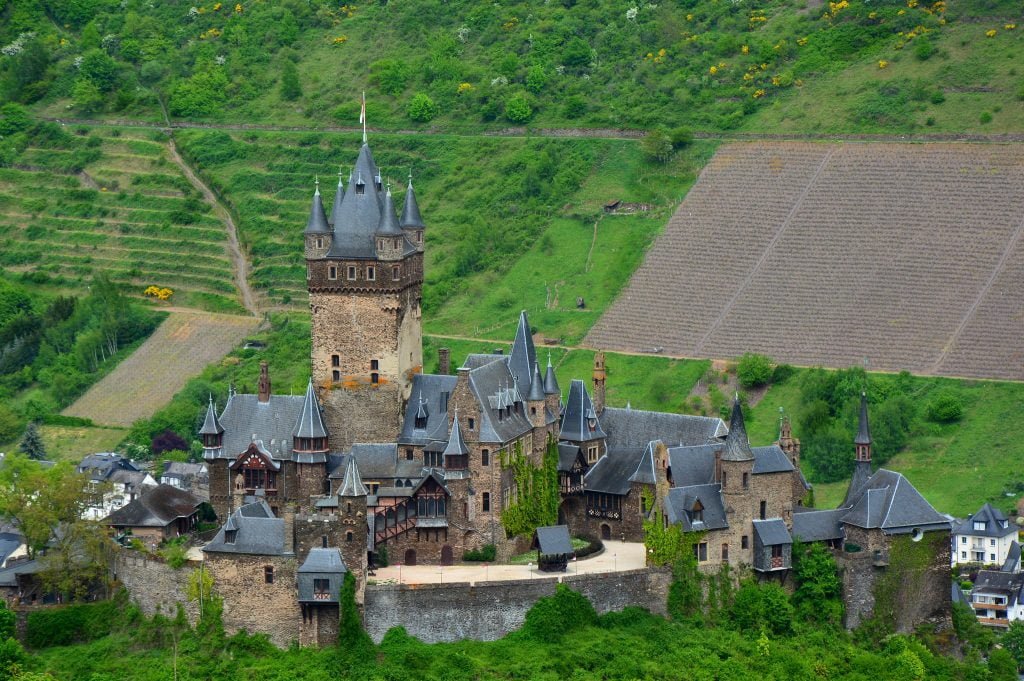
Located on a picturesque hill and overlooking the Moselle River, Reichsburg Castle looks like it has been plucked straight out of Disneyland. The 12-foot-thick walls and Gothic turrets rising on all sides work in perfect contrast with the lush green surroundings. It was later connected to the town at its base in the 14th century.
Steeped in legends, as castles tend to be, Reichsburg is a veritable tourist hub. Its lovely exterior is an attraction in its own right, but the inside is just as fascinating. Several tours are held each day but the gallery events are the highlight of the entire experience. From gourmet festivals to wine galas, there’s a full palate that visitors can experience, depending on the time of year.
- Location: Schlossstraße, Cochem
- Time built: 11th century
- Architectural: Neo-Gothic
- Touring: Allowed. Visit the official website for more information.
17. Sigmaringen Castle
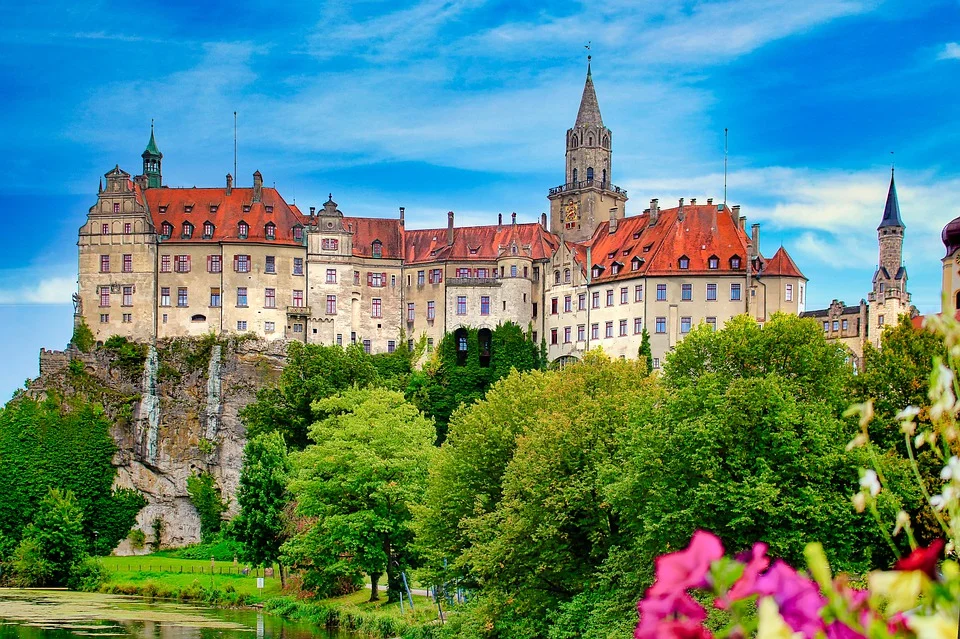
The very first iteration of Sigmaringen Castle originated in the 11th century. It passed through the hands of various owners over the centuries who kept adding to it in their own way. At one point in the nineteenth century, under the ownership of Karl Anton, the castle was fully transformed in order to host the rich and powerful families of his acquaintance. It was also used to host the French Vichy Regime after World War II.
Today, it is an attractive tourist destination. The rooms full of ornate furniture take you back to the time of infinite grandeur of the previous centuries. There’s also a “Hall of Weapons” as well as a “Marstallmuseum” where visitors can look at the collection of princely carriages.
- Location: Swabian Alps, Baden-Württemberg
- Time built: 11th century
- Architectural: Gothic Revival Architecture
- Touring: Allowed. Visit the official website for more information.
18. Mespelbrunn Castle
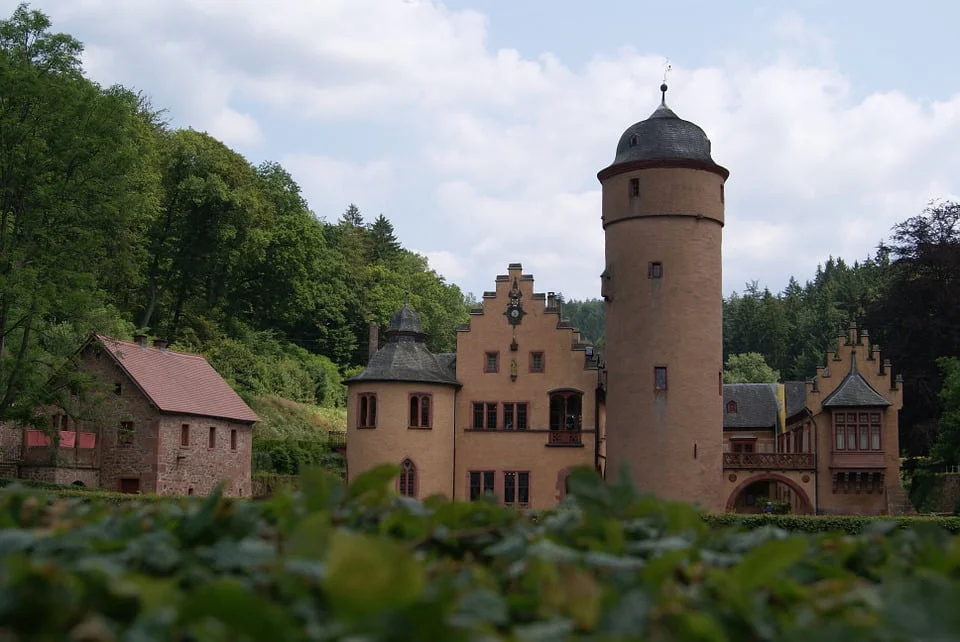
As one of the most important tourist destinations of the Spessart Area, Mespelbrunn Castle has become a landmark in its own right. While its humble origins date back to being a simple house, it was later fortified and added to in a way that gave it the status and stature of a manor house. Today, the only remnant of the original 15th century construction is a tower house.
The classy styling and architecture of this castle are truly a sight for sore eyes. Its picturesque surroundings are a great way to spend a day surrounded by nature and man-made manifestos alike. It’s also been used as a filming location for a German movie and remains a popular attraction for visitors in the area.
- Location: Mespelbrunn
- Time built: 15th century
- Architectural Style: Romanesque/Renaissance
- Touring: Allowed. Visit the official website for more information.
19. Wernigerode Castle
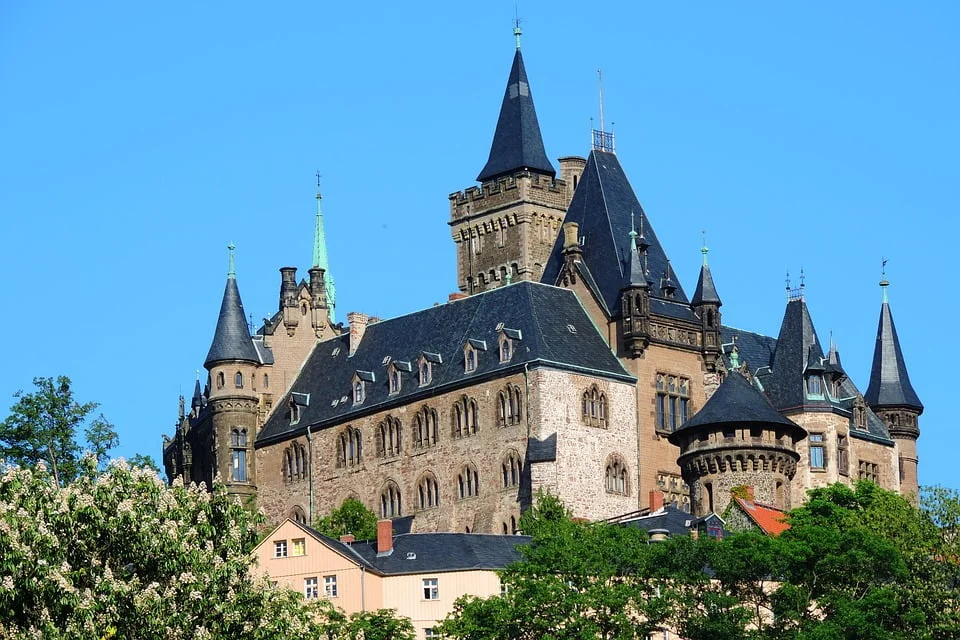
The real significance of Wernigerode Castle was its site, which was the halfway point for German Emperors to rest during their hunting trips. Thus, the castle was conceived as a secure point where they stopped for a little while. With the passage of time, it morphed and transformed into a grander version of itself, with some major Gothic and Renaissance elements added over the centuries.
The one major landmark in the history of Wernigerode Castle is the major reconstruction in the 19th century which happened under Otto zu Stolberg-Wernigerode. Today, with its lush gardens and parks, it’s become a national cultural monument as well as a beloved tourist destination.
- Location: Saxony-Anhalt
- Time built: 12th century
- Architectural Style: Romanesque/Gothic
- Touring: Allowed. Visit the official website for more information.
20. Marksburg Castle
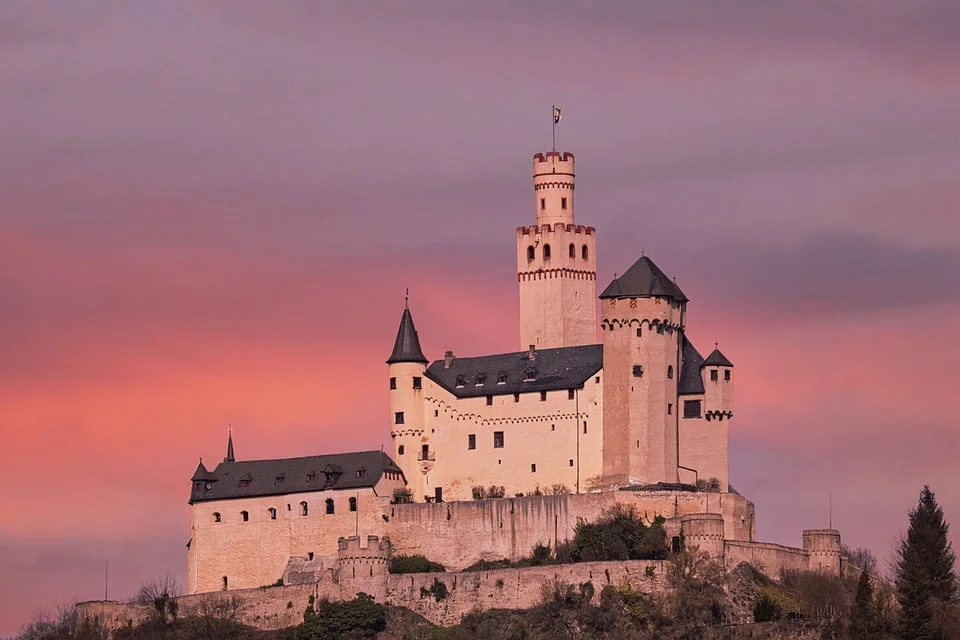
This castle from the Middle Ages was erected on behest of the Epstein family, a powerful clan known for spawning many Archbishops over the course of time. Marksburg was later seized by Napoleon when the Holy Roman Empire finally fell. As a result, Marksburg was given to the Duke of Nassau, who later sold it to the German Castle Association in the 20th century.
Today, it sits high atop its perch over the river and seems as serene as ever. Tourists flock to it every day, enjoying the lovely surroundings and the history that is seeped within the very walls of this building.
- Location: Braubach
- Time built: 12th century
- Architectural Style: Romanesque/Gothic
- Touring: Allowed. Visit the official website for more information.
Planning to Explore Europe? Check Out These Best Castles Lists:
Conclusion
Germany has some of the finest castles not only in Europe but also in the world. The rich history and antiquity of these castles make them an attractive place, not to mention the visually appealing places they oversee. These castles seem to come straight out of a fairy tale, sitting on the top of mountains and overlooking rivers and woodlands. If you plan to visit Germany, do keep these castles in your itinerary.
For more information, general guidelines, advice, and recommendations, feel free to browse around our website and contact us for any assistance.

